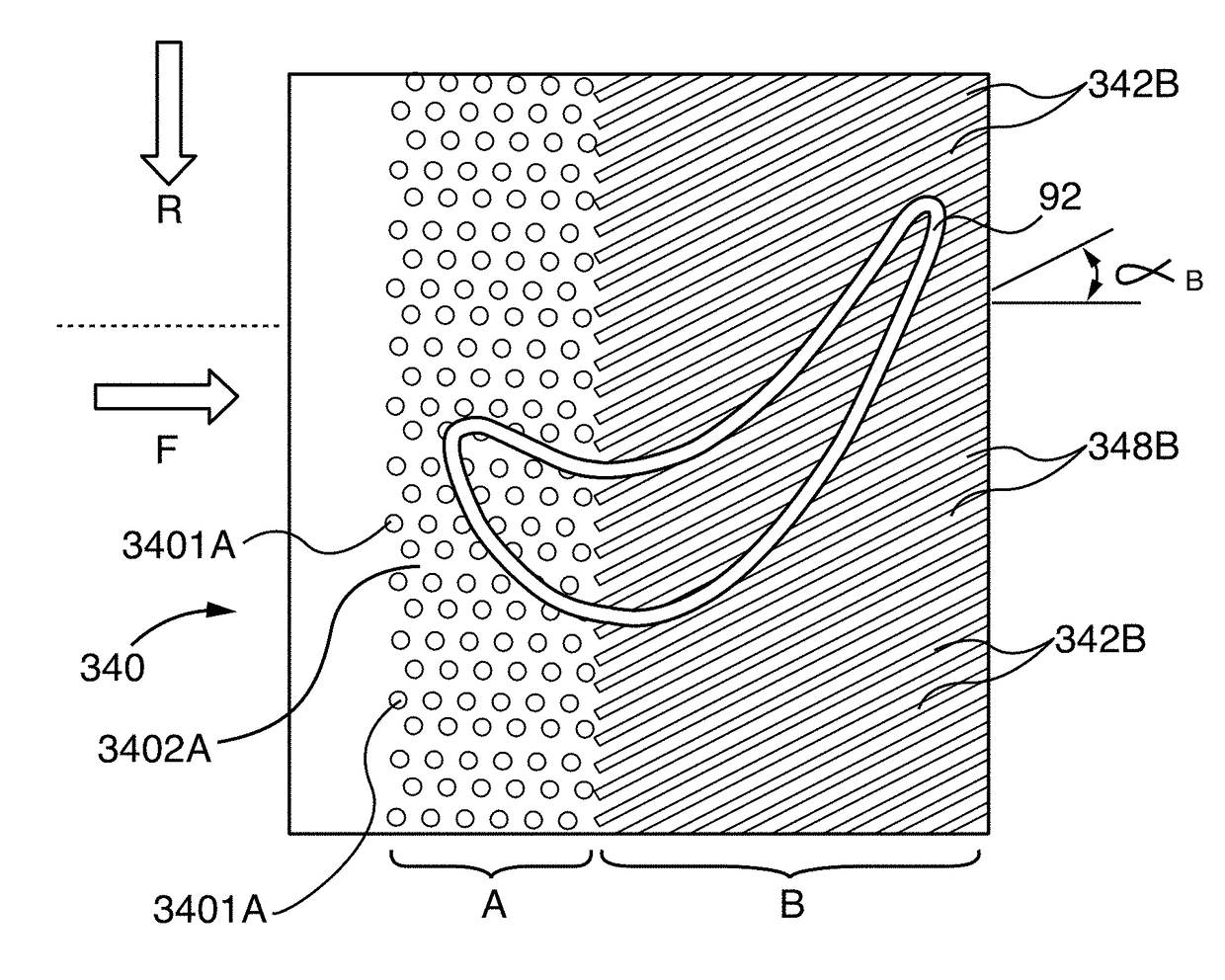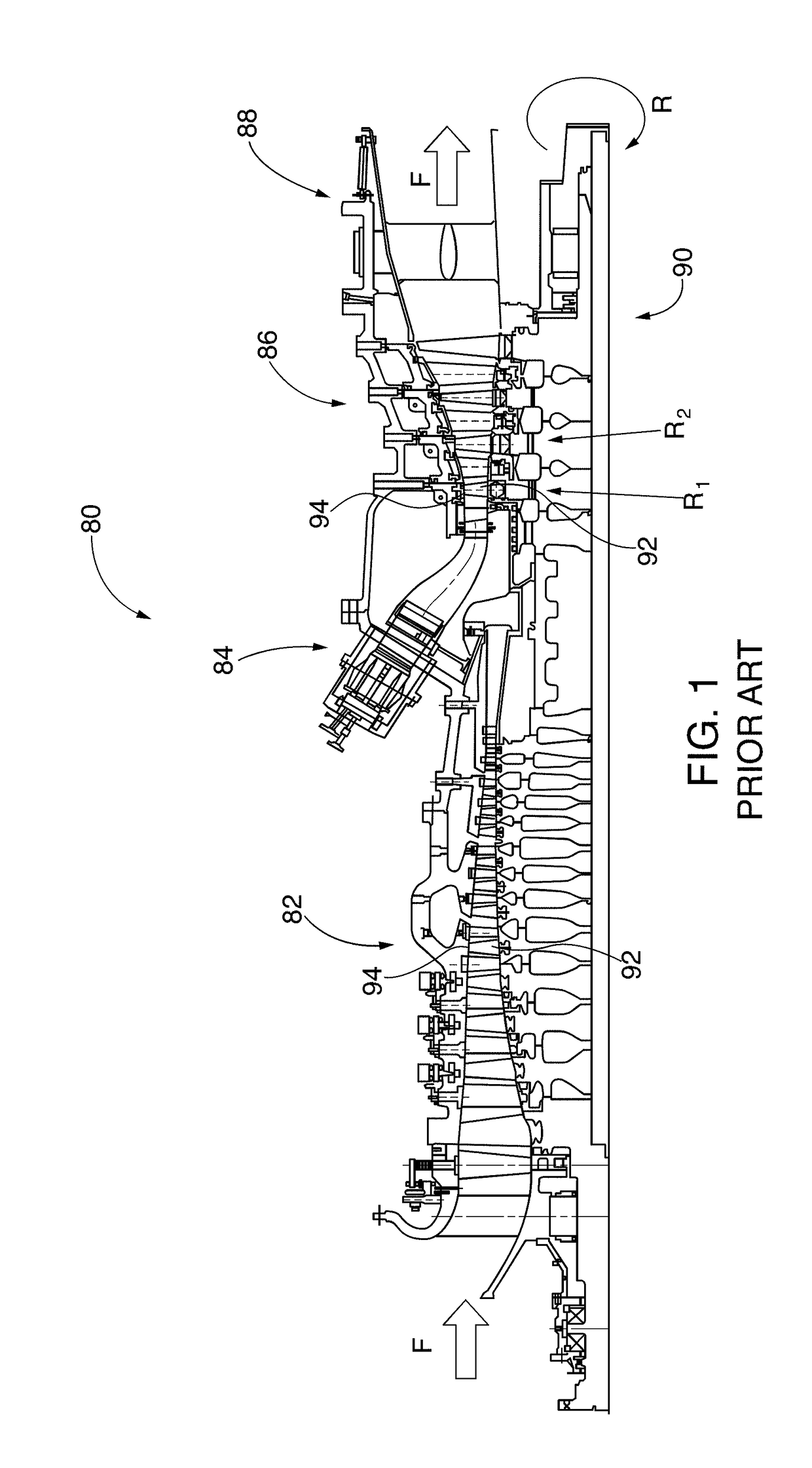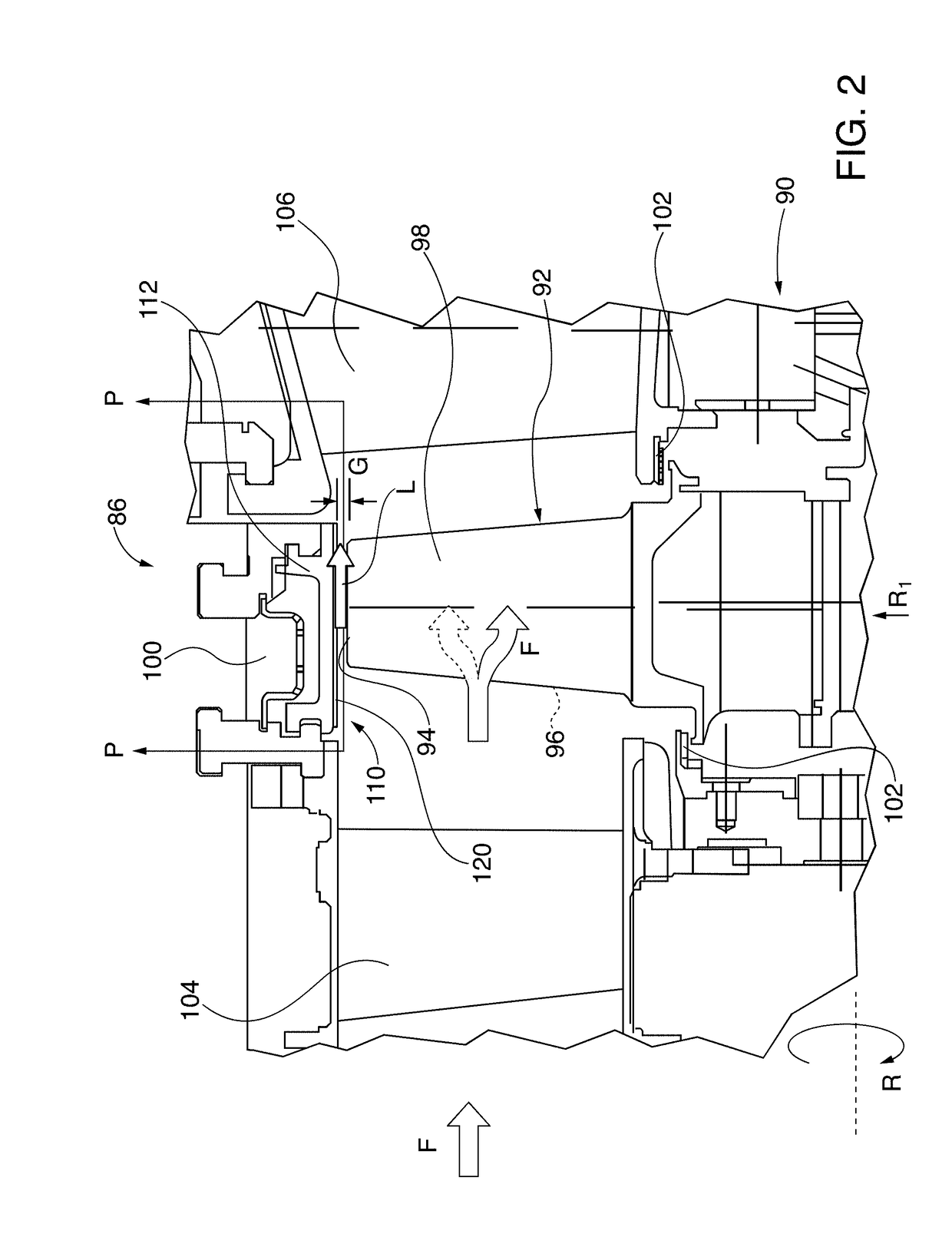Turbine shroud with abradable layer having dimpled forward zone
a turbine engine and abradable layer technology, applied in the direction of machines/engines, climate sustainability, foundry moulds, etc., can solve the problems of local variations in the blade tip gap, reducing the operational reducing the efficiency of the turbine engine, so as to enhance the porosity and abradability, and enhance the effect of hot working gas erosion resistan
- Summary
- Abstract
- Description
- Claims
- Application Information
AI Technical Summary
Benefits of technology
Problems solved by technology
Method used
Image
Examples
embodiment 360
[0082]FIG. 25 shows an abradable component 360 having an inclined, symmetric sidewall rib, cross sectional profile abradable component with inclusion of dual level grooves 368A formed in the ridge tips 364 and 368B formed between the ridges 362 to the substrate surface 367. The upper grooves 368A form shallower depth DG lateral ridges that comprise the wear zone I while the remainder of the ridge 362 below the groove depth comprises the lower wear zone II. In this abradable component embodiment 360, the upper grooves 368A are oriented parallel to the ridge 362 longitudinal axis and are normal to the ridge tip 364 surface, but other groove orientations, profiles and depths may be employed to optimize airflow control and / or minimize blade tip wear.
[0083]In the abradable component 370 embodiment of FIG. 26, a plurality of upper grooves 378A are tilted fore-aft relative to the ridge tip 374 at angle γ, depth DGA and have parallel groove sidewalls. Upper wear zone I is established betwee...
embodiment 390
[0084]As shown in FIG. 28, upper grooves do not have to have parallel sidewalls and may be oriented at different angles relative to the ridge tip surface. In addition, upper grooves may be utilized in ridges having varied cross sectional profiles. The ridges of the abradable component embodiment 390 have symmetrical sidewalls that converge in a ridge tip. As in previously described embodiments having dual height grooves, the respective upper wear zones I are from the ridge tip to the bottom of the groove depth DG and the lower wears zones II are from the groove bottom to the substrate surface. In FIG. 28, the upper groove 398A is normal to the substrate surface (ε=90°) and the groove sidewalls diverge at angle Φ. For brevity, the remainder of the structural features and dimensions are labelled in FIG. 28, with the same conventions as the previously described abradable surface profile embodiments and has the same previously described functions, purposes, and relationships.
[0085]In FI...
embodiment 340
[0096]Notwithstanding the universally applicable forward zone A dimpled engineered surface feature of the abradable component embodiment 340 of FIG. 38, in some applications it is preferable or desirable to utilize hockey stick-like ridges and groove patterns in both zones that are tailored for the airflow characteristics of a specific blade airfoil profile. The Row 2 blade profile of FIGS. 41 and 42 differs from the Row 1 blade profile of FIGS. 39 and 40. The abradable component 480 plan form in FIG. 43 is tailored to match the Row 2 blade 920 airflow characteristics. The abradable component 480 has a non-inflected, bi-angle hockey stick plan form wherein the plan form line-segment pattern of the grooves and ridges in the forward and aft zones are both angled in the same direction opposite the blade 920 rotation direction R. The first or forward angle αA and second or aft angle αB are defined relative to the support surface axis, which is oriented parallel to the corresponding turb...
PUM
| Property | Measurement | Unit |
|---|---|---|
| trailing edge angle | aaaaa | aaaaa |
| height | aaaaa | aaaaa |
| height | aaaaa | aaaaa |
Abstract
Description
Claims
Application Information
 Login to View More
Login to View More - R&D
- Intellectual Property
- Life Sciences
- Materials
- Tech Scout
- Unparalleled Data Quality
- Higher Quality Content
- 60% Fewer Hallucinations
Browse by: Latest US Patents, China's latest patents, Technical Efficacy Thesaurus, Application Domain, Technology Topic, Popular Technical Reports.
© 2025 PatSnap. All rights reserved.Legal|Privacy policy|Modern Slavery Act Transparency Statement|Sitemap|About US| Contact US: help@patsnap.com



